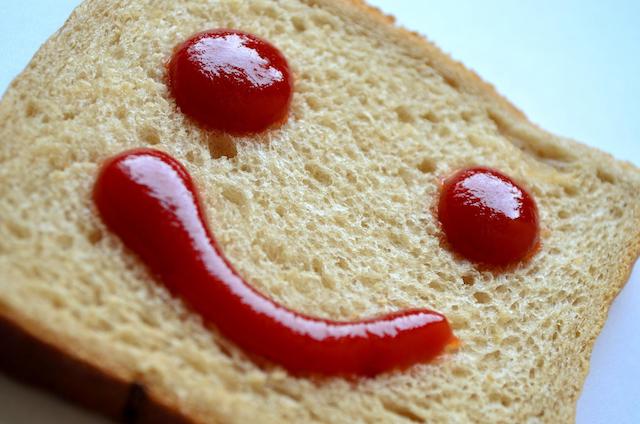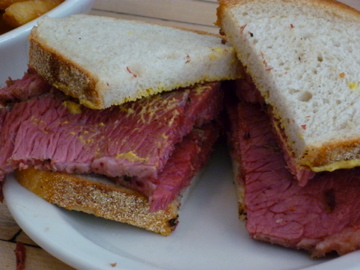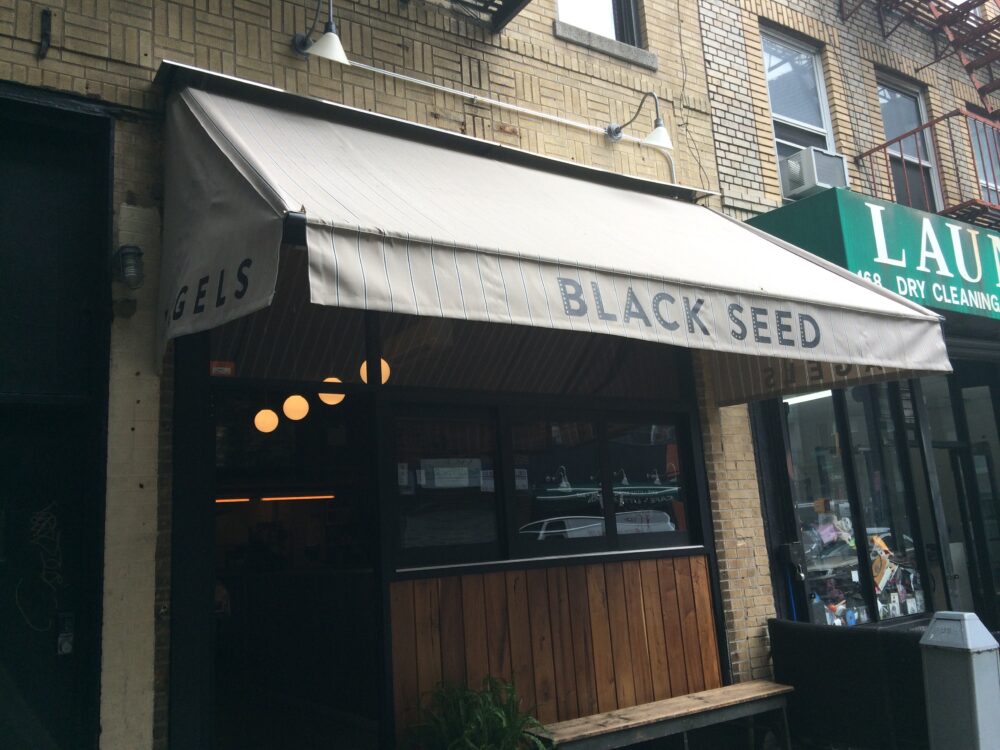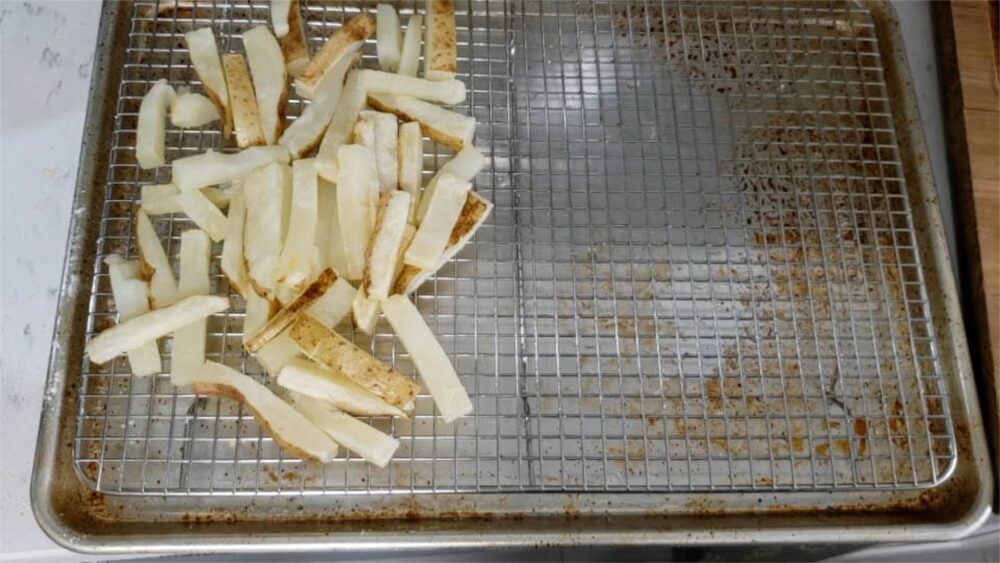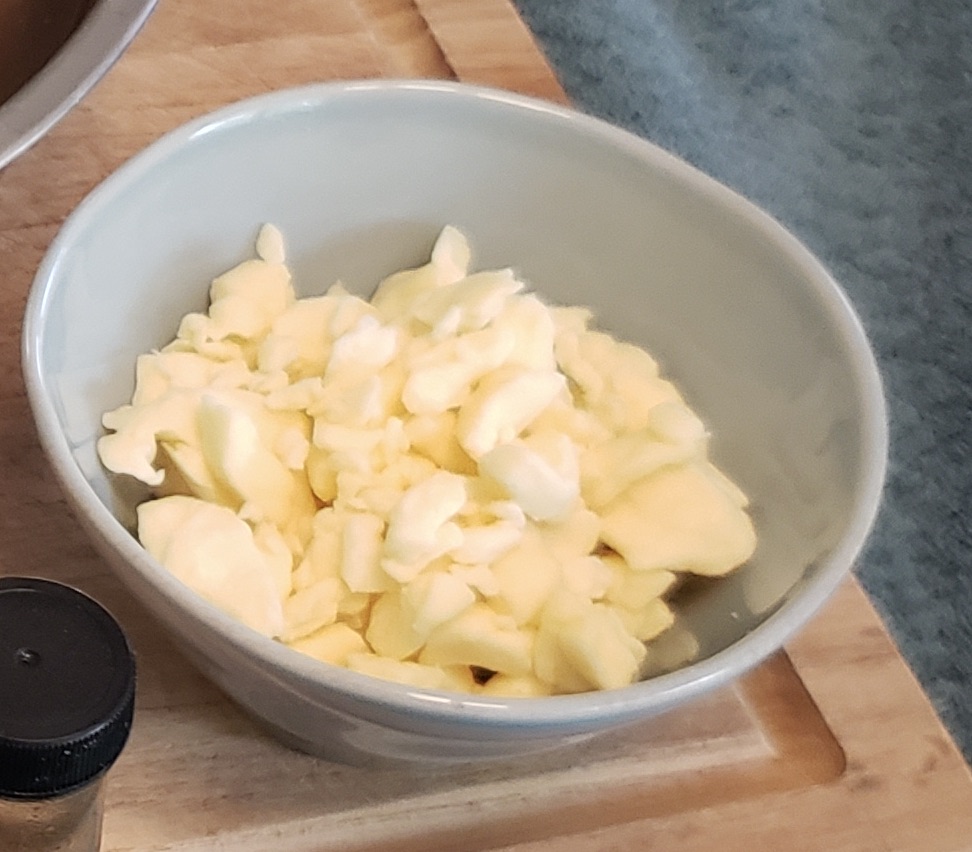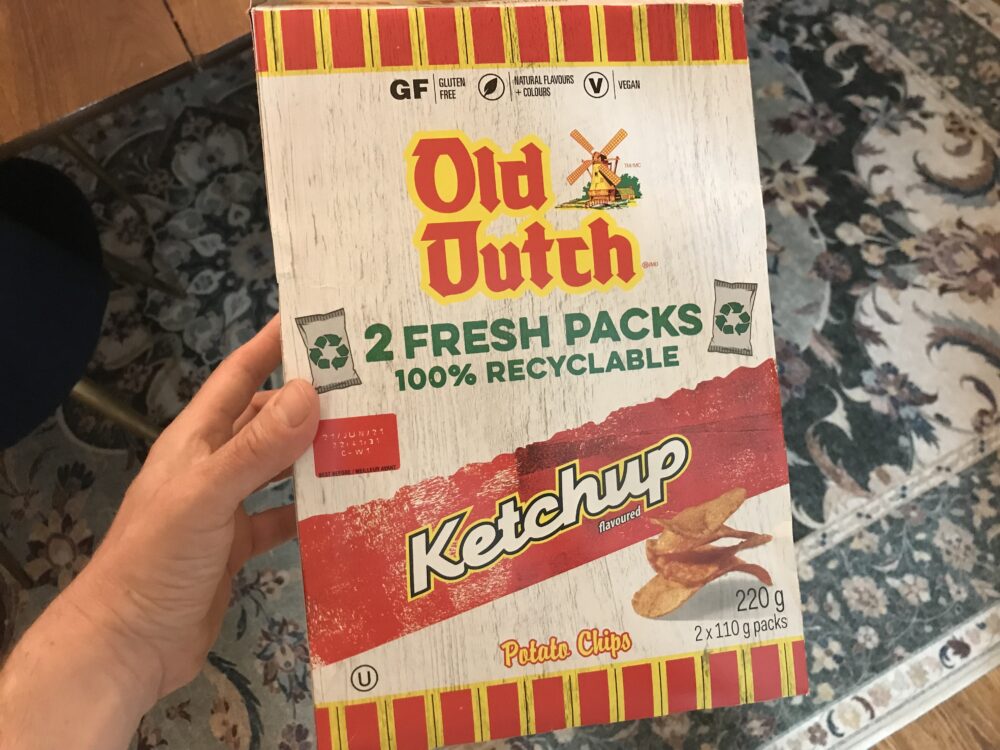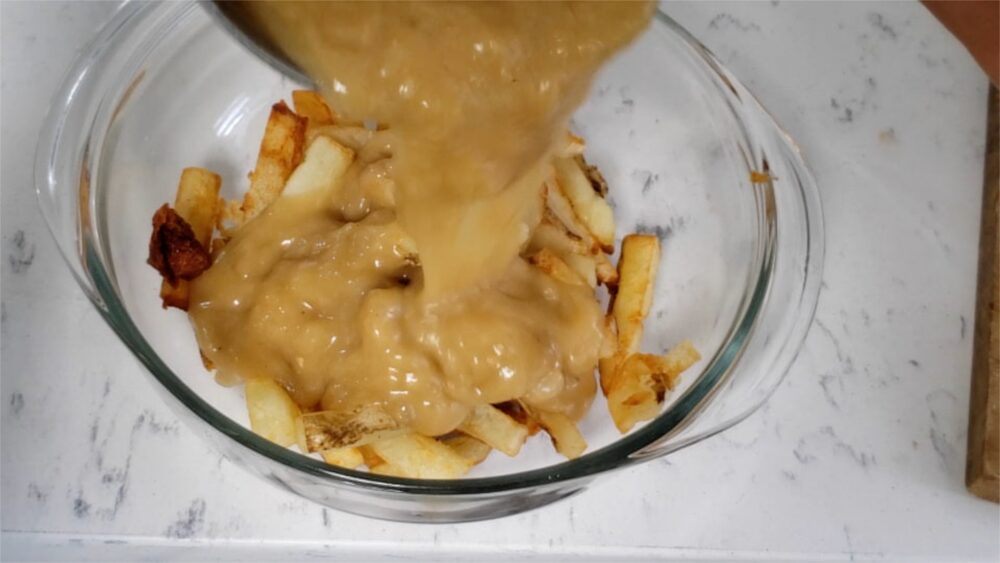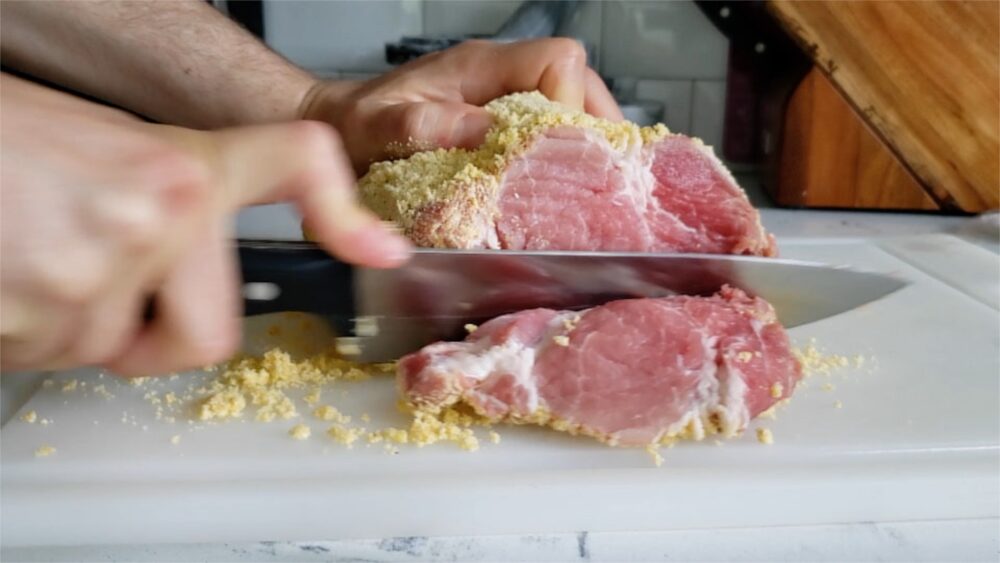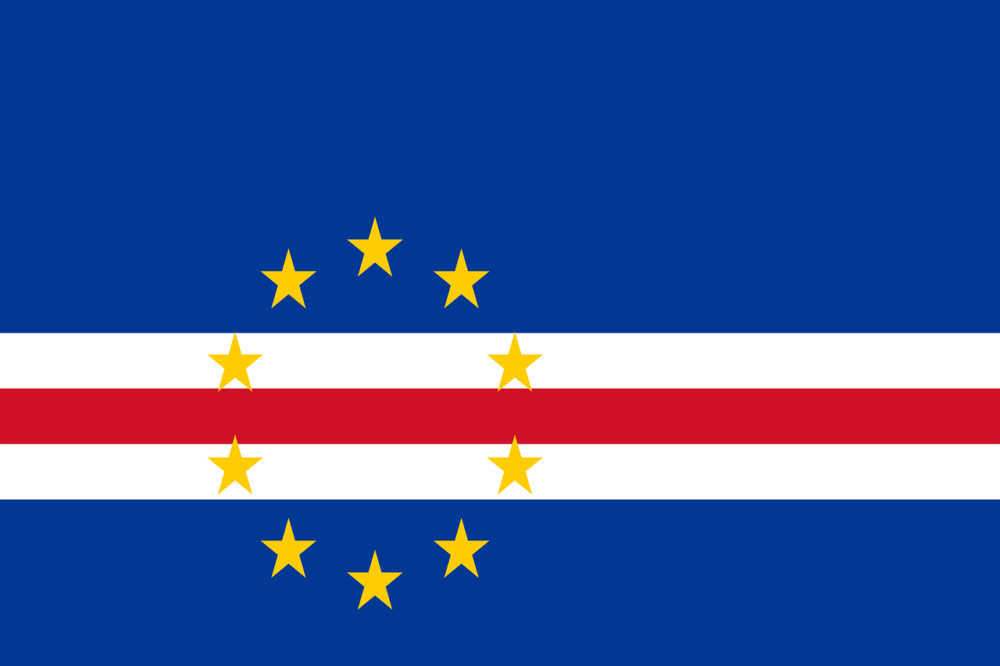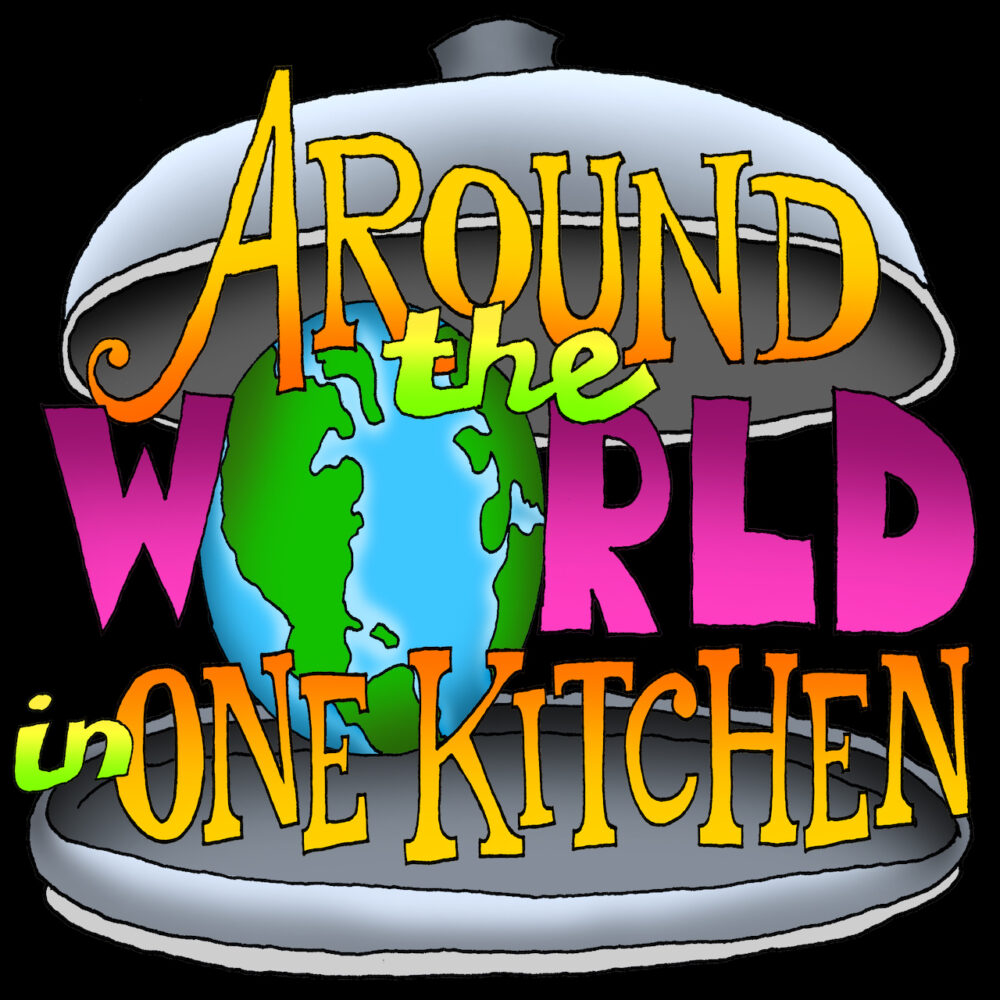We’ve never been so close to home on this journey. We’re headed just a bit north to our friends and neighbors in Canada.
I have so many friends from Canada who I hope check this out and give me honest feedback. They’ll probably just be nice (as Canadians are known for being).
Sam was not so familiar with Canada, but after learning that the country produces 85% of the maple syrup in the world, he was all ears (with mouth wide open).
THE PLACE AND ITS CUISINE
Canada is the second largest country in the world, but most of its landmass is unoccupied due to rocky, mountainous terrain and frigid temperatures. So there are very few people outside of the southern metropolis areas close to the northern border of the US. Polar bears, however, are right at home in Northern Canada.
Just like its cousin to the south, Canada’s cuisine is mostly comprised of the many immigrants that arrived to the New World over time.
Prior to the European settlements, of course, First Nations and Inuit people made their cuisine up of what was locally available – namely berries and meat like seal, Arctic char, and caribou. And they still do in the northern Arctic provinces.
Southern Canada, where the majority of the population lives has a much more varied diet. Its traditions are mostly rooted in British and French influence, as can be gleamed by the country’s dual language.
Modern Canadian cuisine also has strong regionality. It’s very difficult to lump the entire country’s cuisine into a few dishes. Acadian food is different form Québécois cuisine which is different from the Asian influence in British Columbian food.

Meat is very important, especially beef and pork. Fish, namely salmon and Arctic char, are very common as well.
Many of Canada’s dishes look similar to the ones you might find in the US, but with a few subtle differences. For instance, their smoked meat (from Quebec) is similar to New York pastrami, but much meatier and more peppery. Also, the Montreal-style bagels resemble New York bagels, but they are boiled in honey water and topped with sesame seeds.
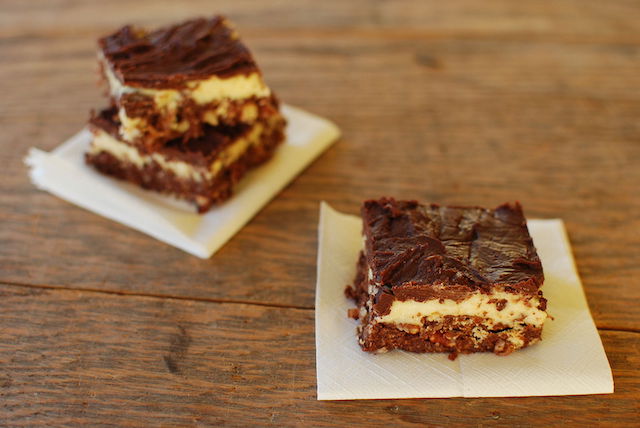
Instead of Dunkin’ Donuts with munchkins, they have Tim Horton’s with timbits. Instead of s’mores, they have Nanaimo bars (a layered cookie with wafer, custard, and chocolate). Instead of elephant ears, they do beaver tails.
One thing Canadians put on everything might surprise you. You’ll expect maple syrup, sure, but ketchup is by far the favorite condiment. There is even a ketchup flavor of potato chips which is completely Canadian. See below for more on that!
Traditional Dishes:
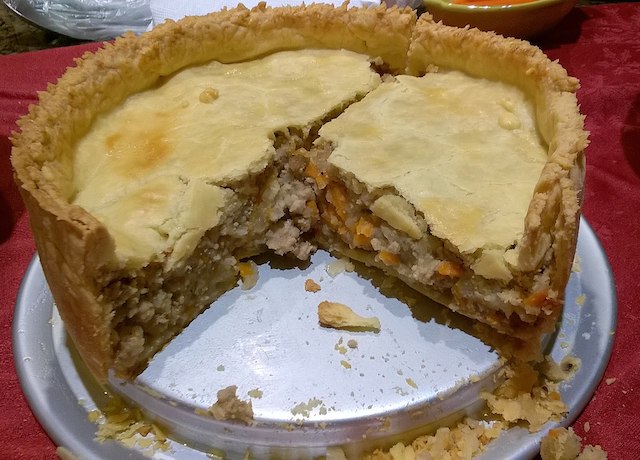
TOURTIERE – this pot pie from Quebec is filled with ground pork or wild game, mixed with onions and spices, and cooked in a pie crust, a very popular holiday meal
BANNOCK – an indigenous fried flat bread made with a variety of ingredients and styles; not so different from a biscuit, especially popular in the territory of Nunavut
GINGER BEEF – a Canadian Chinese dish that originated in Calgary and features fried strips of beef in a sweet sour sauce
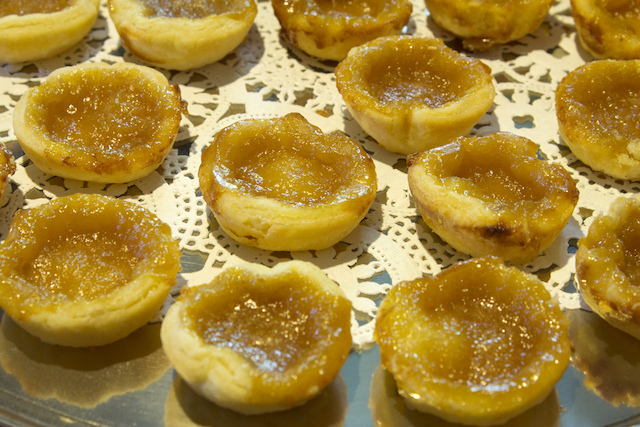
BUTTER TARTS – a small but delectable little pastry with a gooey filling of eggs, walnuts, sugar, and butter and a crisp pastry shell; some people put raisins in it and others detest that idea
CANADIAN FOOD IN NEW YORK
It’s not too surprising when I can’t find a restaurant specializing in Cameroonian or Bruneian cuisine in New York. But Canada is so close, you’d figure we’d have to have something.
Well, we do, but I think because of the close similarities of our cuisines, that many New Yorkers don’t find it “exotic” enough and would never say “Let’s go out for Canadian food tonight!”
That being said, I thank Noah Bernamoff for opening Mile End Delicatessen in 2010 in Brooklyn. He modeled his Jewish deli after ones in his hometown of Montreal and we finally got a taste of amazing smoked meat and Montreal-style bagels.
Noah left the business but the restaurant is still there and you can still get a taste of Canadian deli classics.
His other venture, however, has expanded quite a bit and grown a large reputation around the city for Montreal-style bagels. Actually I would be willing to bet when many of the Instagrammers visit Black Seed Bagels, they don’t even realize they are tasting Canadian food. At this point Black Seed has become a part of the New York dining culture that many may think those are New York bagels.
There are also some full service restaurants that claim to specialize in food from Canada. The Canuck is a new full-on Canadian sports bar often showing hockey games on the television feet away from the moose head on the wall.
The menu is pretty standard and aside from poutine, nothing distinctly Canadian. The celebrity photos, however, that range from Justin Bieber to Mike Meyers to Alex Trebeck are distinctly Canadian.
THE VIDEO
Due to the labor intensity of the peameal bacon, this video actually spans five days. Sam still can’t figure out how we make that flashback happen. Perhaps you will recognize the reference to a classic film from a Canadian comedian.
We do get very silly with lots of stereotypes about both Canadians and Americans. I also recall a time not so long ago when calling long distance to Canada would have cost a pretty penny. Nowadays, there is no long distance and Canada did away with their pennies. Sam attempts to make me re-create calling Canada using a potato.
We may not be as funny as Canada’s brilliant line-up of famous comedians, but we keep ourselves amused.
THE DISHES
I tried to pick dishes that were typical to the Great White North and in doing so, I realized they were just slightly different versions of foods we eat and love all the time in the United States.
French fries are served here with just about every sandwich or fast food order. In Canada, poutine allows fries to take the spotlight. And in fact, today it is the entire country’s National Dish.
Poutine definitely originated in the French-speaking province of Québec, but its actual origins are a bit murky.
The word poutine probably comes from the French word “pouding” which means pudding and generally refers to a messy mixture of food.
The best story I’ve read about the origin is from a restaurant in Warwick, Québec when in 1957 a customer asked to have cheese curds (from the nearby fromageries) added to his fried potatoes. The customer exclaimed “Ça va te faire une maudite poutine!” (“That will make a damned mess!”)
Then the story continues: to prevent the fries from going cold too quickly, a hot gravy was eventually added to the dish.
And there you have it, the basis for the traditional poutine recipe: hand-cut potatoes twice-fried and then topped with a homemade gravy and cheese curds. A delicious mess indeed!
But as most dishes evolve. poutine has become. very much a blank slate for other toppings. In some ways, it reminds me of nachos topped with anything you can imagine from bacon to pickles to lobster to Kit Kat bars.
Another thing many Americans talk about in reference to Canada is what is called “Canadian bacon”. Of course Canadians don’t call it this. They just call it bacon.
There are actually two types of bacon in Canada. One is known as back bacon, which differs from bacon in the US because it is made from pork loin rather than the fattier pork belly. It is still cured, smoked, and cooked.
Another style of bacon that is popular in certain parts of Canada, specifically Ontario, is pea meal bacon.
I tried this at the famous Carousel Bakery in the St. Lawrence Market in Toronto and was eager to re-create it and introduce it to my family.
Peameal bacon is made similarly to back bacon, but the pork loin is wrapped in a meal before being roasted or fried. In the old days, this meal was actually made from crushed dried yellow peas. Today it is almost always made with cornmeal.
This bacon is not smoked, but cured and then fried or roasted. It was wrapped in yellow peas to help preserve the meat for a longer period of time.
The brine for the pork varies, but usually includes sweetners like maple syrup and plenty of salt (as is the nature of a brine)
The bacon, which tastes closer to ham, is often served in a sandwich with some classic Canadian mustard. And if you can get your hands on some Kozlik’s mustard, that’s the one to get!
SPECIAL INGREDIENTS
Considering the similarity in our cuisine, it’s surprising how many special ingredients I had to search down for our Canadian recipes.
The easiest is one that is popular in certain areas of the United States, but many in this country have no idea the wonders of cheese curds.
Cheese Curds
They might not sound terribly appetizing, but these little nuggets of dairy are heavenly. Ask anyone from Michigan or Minnesota.
For the uninitiated, cheese curds are the chunks of curdled milk that is left after separating the liquid whey. They have a rubbery or squeaky texture but full on-rich flavor most resembling a mild cheddar.
They are always put on poutine, but are also eaten on their own or marinated in garlic and oil or better yet, breaded and deep fried.
Prague Powder No. 1

We won’t be using Prague Powder #1 when we get to the final country of the C’s, but the curing salt is named for the capital of the Czech Republic because the process of first curing meat with sodium nitrite was invented there.
Prague Powder #1 is not only used in Canadian food, in fact it is used to cure and preserve corned beef, hot dogs. and sausages.
A little bit of Prague Powder #1 goes a long way and thanks to the combination of salt and sodium nitrite, bad bacteria like botulism is not able to thrive. The salt mixture is colored pink so as not to confuse it with ordinary table salt. This stuff is potent and should not be consumed on its own.
For safety reasons, only about 1 tsp of Prague Powder #1 needs to be used for 5 pounds of meat.
THE RECIPES
Recipes inspired by:
Peameal Bacon from Canada
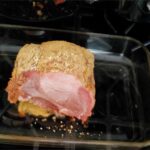
This is one version of what Americans call "Canadian" bacon – it's mostly found in and around Toronto. Brined pork is wrapped in cornmeal and fried or roasted. It's a thicker, meatier bacon that is not smoked but moist and delicious. Perfect on sandwiches or by itself.
Brine
- 4-5 pounds pork loin
- 1 cup maple syrup
- 1/2 cup kosher salt
- 1 tspn Prague powder #1
- 2 tbspn mustard seeds
- 2 tspn black peppercorns
- 4 garlic cloves (minced)
- 3 cloves
- 2 bay leaves
- 1 lemon (sliced into wedges)
Crust
- yellow cornmeal (enough to cover pork (about 1 cup))
Brine the Pork
-
Add 4 cups of water to a large pot, along with maple syrup, kosher salt, Prague powder # 1, mustard seeds, black peppercorns, garllic, cloves, bay leaves, and lemon.
-
Bring to a boil and stir. Add 8 more cups of cold water, stir, and turn off the heat.
-
When cool, add pork to a large plastic. bag and pour the brine all over it. Get as much air out of the bag as possible and put in the refrigerator for about 5 days.
Cover with Cornmeal
-
After brining the pork for 5 days or so, remove from brine and rinse pork. All pork to soak in clean water for about 30 minutes.
-
Remove from water and pat dry.
-
Roll the pork in the cornmeal and make sure the exterior of the loin is covered in corn meal. Lightly push down on the pork to make sure a crust forms.
-
Chill the pork for about an hour to let rest and crust to continue to form.
Cook
-
Slice the pork and then you can fry it in a cast iron skillet with a little bit of oil, flipping halfway through. A few minutes on each side depending on the thickness.
-
OR
-
Preheat oven to 375° F and bake unsliced loin for an hour. Internal tempertaure should read 165° F.
-
Allow to rest before slicing.
Poutine from Canada
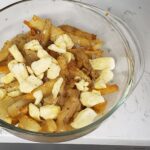
Probably the most famous dish from the Great White North, this poutine is terribly addicting, with twice-fried potatoes that are topped with a decadent gravy and some squeaky cheese curds.
Fries
- 3-4 potatoes (preferably Russet)
- 1/2 lemon (juiced)
- 3 cups vegetable, canola, or peanut oil
- 1 cup cheese curds
- salt and pepper (to taste)
Gravy
- 3 tbspn corn starch
- 6 tbspn butter
- 1/4 cup flour
- 1 cup beef broth
- 1 cup chicken broth
- 2 tspn worcestershire sauce
- salt and pepper (to taste)
Prep Fries
-
Slice potatoes into logs in the shape of french fries.
-
Soak the potatoes in a large bowl of cold water and lemon juice. Refrigerate for a few hours or overnight.
Gravy
-
Dissolve cornstarch in 2 tbspn of water. Set aside.
-
Melt butter in a saucepan. Add flour and stir for about 5 minutes until dissolved and turning golden brown (the color of peanut butter).
-
Add beef broth and chicken broth and bring to a boil, whisking. Add worcestershire sauce.
-
Stir in half of the cornstarch mixture and lower to a simmer, cooking for about a minute.
-
Add more cornstarch mixture if you want a thicker gravy.
Fry Fries
-
Remove fries from water and make sure to dry them well.
-
Heat oil in a deep pot until it reaches 300° F. Add fries and cook for about 6 minutes. They should not yet be browned.
-
Remove fries and place of wire rack.
-
Increase the heat on the oil to 375° F. Add fries back in and cook for about 5 more minutes until they turn golden brown.
-
Remove to a paper towel.
-
Add cheese curds and lightly toss. Season with black pepper and serve.
BONUS TREAT
Ketchup Chips
It’s funny. People from the US often thinks this flavor of potato chips sounds crazy while Canadians have all gown up with it and think it’s the most perfect flavor.
The thing is once you give them a try, you’ll understand that Canadians are right.
For some reason these are not available in the United States, but I have tried them in Canada and here thanks to friends who smuggle them south. And I knew I had to order them online for Sam (who is a big ketchup fan) to try.
I mean, when you think about it, we all know French fries go great with ketchup, so why would potato chips be any different?
They have that sweet, tangy, salty experience that makes the best flavor sensation. Stop what you’re doing and try to get your hands on a bag (or a box) right now!
HOW WE SCREWED IT UP
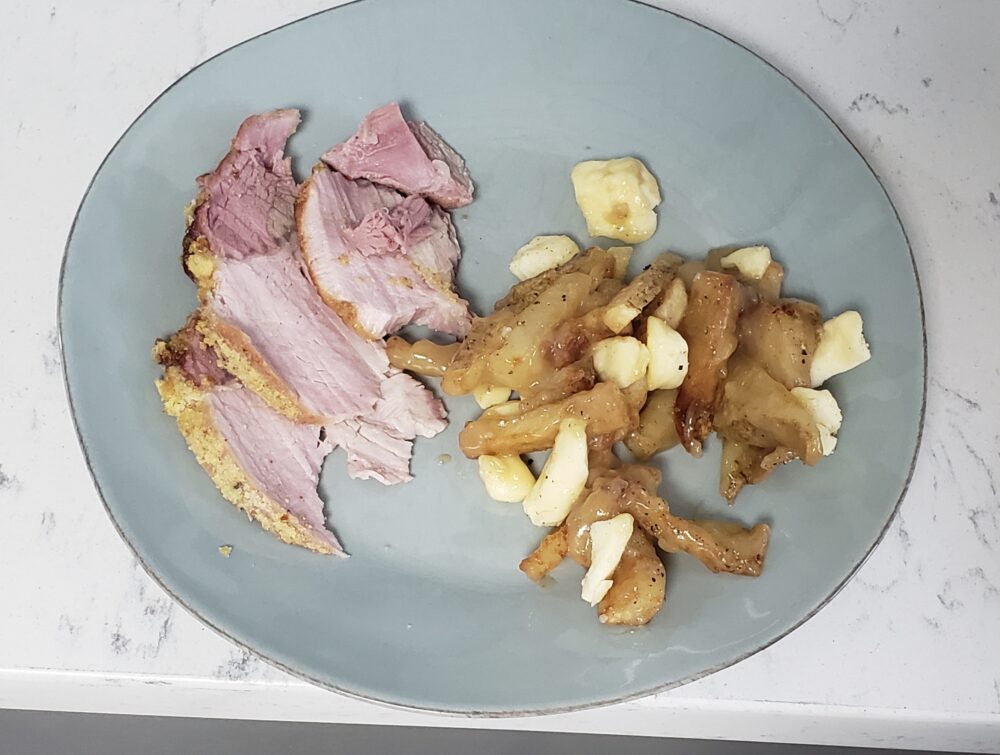
Let’s start with the easiest and most successful. The poutine!
I don’t have a huge amount of experience deep frying things, so there were definitely a few things I could have improved upon.
Firstly, the potatoes weren’t sliced completely even so they didn’t cook terribly even. I also didn’t use enough oil (I’m always stingy on the oil) and the pot was a little crowded so some of the potatoes fell apart and some were less crispy than other.
But I nailed it when it came to the gravy, It was so flavorful and rich and made up for any less-than-perfect fries. And, of course, we happily would have eaten the cheese curds by themselves.
If I have little experience deep frying, I have even less experience curing meat. I have literally zero. So this was a big experiment for me.
And it wasn’t terribly successful. I was very paranoid about doing something wrong and getting us all sick. And when I saw different shades of color throughout the meat, I got nervous.
Sam and I tried some of the pink section and it was actually mighty tasty. But other parts of the loin were gray and white, which lead me to believe the curing agent didn’t penetrate throughout the meat.
So as sad as it was, we tossed a good deal of the meat. Wasting food like that breaks my heart for so many reasons. But I really did not want to take a chance on getting anybody seriously sick.
I added the correct amount of Prague Powder #1, but perhaps the vessel I put it in for five days allowed some of the meat to be outside the brine. I’m not really sure what went wrong, but I have a sense it had to do with my storage decisions.
This is an experiment I would like to try again, but I’m more worried about wasting another fine piece of meat. That is not economical or environmentally responsible. So I’m afraid I will have to save my peameal bacon craving until my next trip to Toronto.
SAM’S REACTION
Before I discovered the color differences in the pork, Sam and I both had a piece of the peameal bacon. Sam’s eyes lit up. The flavors were all there and hopefully this means when we let the professionals cook it, he’ll gobble it up.
For those concerned, we only ate the part that was pink and it has been many many weeks since this experiment and both Sam and I are fine.
The fries were also a big success, but the truth is all Sam wanted to eat were the squeaky cheese curds.
That is until I brought out the box of ketchup chips and we basically all had chips and fries for dinner. Thanks, Canada!
NEXT TIME
Next time, we are heading to a series of tropical volcanic islands. Cabo Verde (or Cape Verde) may not be the first place that comes to mind, but it should be on your radar. It’s on ours now….




